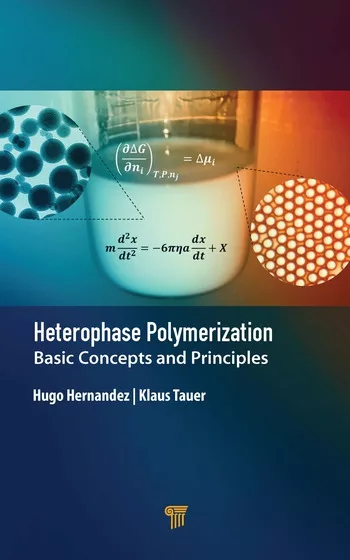Ask Dr. Dave
September 2004

QUESTION: Can you recommend a method for bonding aluminum to aluminum for use in a marine (salt water) environment? We are currently using anodized aluminum with a two-part epoxy or reactive acrylic adhesive. Both adhesives have good initial bond strength, but the bond degrades with exposure to salt water. The bonded parts (small sailboat rudders) are not subject to large loads and do not need to withstand more than moderate abuse. However, longevity is a concern. A useful life of about 10 years is required.
ANSWER: All adhesives will lose strength upon immersion in water. Water acts in two ways on a bonded assembly - it can be absorbed into the adhesive and soften it, and it can degrade the interface between the adhesive and the bonded surfaces. You should ensure that the samples have dried out thoroughly when you test after the water immersion; you may find that much of the initial strength has been retained. Secondly, you should talk to your adhesive supplier and ask for the best adhesive for long-term water immersion. General-purpose two-part epoxies are easy to use but do not typically give the highest performance when cured at room temperature. You may have to use heat curing to get the best performance. Also, the organosilane primers commonly used for bonding metals to glass will often give improved water resistance with both epoxies and reactive acrylics when used to bond metals. You should also examine whether it is possible to protect the bond line from water. If you can seal it with a moisture-resistant sealant such as a silicone or polysulfide, this should provide additional protection for the bond.
QUESTION: We are a company specializing in backyard multi-sports courts. We are bonding putting green turf to a free-form concrete pad and we are not too excited with the product that we are currently using. One of the turfs has a cushion backing approximately 1/4" thick that would provide an ideal surface for bonding. The second turf is a woven-type backing about 1/16" thick, and there is no cushion effect. Please advise us on suitable adhesives.
ANSWER: Many adhesives have been used for this type of application, including neoprene contact cements, natural rubber latex and EVA latex. However, for maximum outdoor durability, a crosslinked acrylic latex is probably the best product choice. Experiment and make sure you get good wetting and penetration of the fibers. It is very important that your concrete slab be fully cured, clean and dry before applying the adhesive to it. Make sure that you follow the adhesive manufacturer's instructions closely on application methods and use the correct drying time of the adhesive before assembling the bond. Also, take care to roll the turf in place rather than dropping it; this will ensure maximum contact of the adhesive with the turf and eliminate any air pockets.
Questions for publication should be directed to Dr. Dave Dunn at 242 Trails End, Aurora OH 44202; phone (330) 562-2930; fax (253) 681-8460; e-mail DrDave242@att.net ; or visit http://www.fldenterprises.com .

Dr. Dave Dunn
QUESTION: Can you recommend a method for bonding aluminum to aluminum for use in a marine (salt water) environment? We are currently using anodized aluminum with a two-part epoxy or reactive acrylic adhesive. Both adhesives have good initial bond strength, but the bond degrades with exposure to salt water. The bonded parts (small sailboat rudders) are not subject to large loads and do not need to withstand more than moderate abuse. However, longevity is a concern. A useful life of about 10 years is required.
ANSWER: All adhesives will lose strength upon immersion in water. Water acts in two ways on a bonded assembly - it can be absorbed into the adhesive and soften it, and it can degrade the interface between the adhesive and the bonded surfaces. You should ensure that the samples have dried out thoroughly when you test after the water immersion; you may find that much of the initial strength has been retained. Secondly, you should talk to your adhesive supplier and ask for the best adhesive for long-term water immersion. General-purpose two-part epoxies are easy to use but do not typically give the highest performance when cured at room temperature. You may have to use heat curing to get the best performance. Also, the organosilane primers commonly used for bonding metals to glass will often give improved water resistance with both epoxies and reactive acrylics when used to bond metals. You should also examine whether it is possible to protect the bond line from water. If you can seal it with a moisture-resistant sealant such as a silicone or polysulfide, this should provide additional protection for the bond.
QUESTION: We are a company specializing in backyard multi-sports courts. We are bonding putting green turf to a free-form concrete pad and we are not too excited with the product that we are currently using. One of the turfs has a cushion backing approximately 1/4" thick that would provide an ideal surface for bonding. The second turf is a woven-type backing about 1/16" thick, and there is no cushion effect. Please advise us on suitable adhesives.
ANSWER: Many adhesives have been used for this type of application, including neoprene contact cements, natural rubber latex and EVA latex. However, for maximum outdoor durability, a crosslinked acrylic latex is probably the best product choice. Experiment and make sure you get good wetting and penetration of the fibers. It is very important that your concrete slab be fully cured, clean and dry before applying the adhesive to it. Make sure that you follow the adhesive manufacturer's instructions closely on application methods and use the correct drying time of the adhesive before assembling the bond. Also, take care to roll the turf in place rather than dropping it; this will ensure maximum contact of the adhesive with the turf and eliminate any air pockets.
Questions for publication should be directed to Dr. Dave Dunn at 242 Trails End, Aurora OH 44202; phone (330) 562-2930; fax (253) 681-8460; e-mail DrDave242@att.net ; or visit http://www.fldenterprises.com .
Looking for a reprint of this article?
From high-res PDFs to custom plaques, order your copy today!





